Core Strengthening Yoga Asana/Postures:
Core muscles comprise almost all the muscles except your arm and the legs. Functional movements are highly dependent on the core. Core strengthening yoga Asana improves your posture, improves your ability to complete your everyday activities and it can also improve your sports performance.
Scroll through our Yoga Core Strengthening Asana/Posture library for beginner, intermediate and advanced postures, Click on the link or thumbnails to know the details.
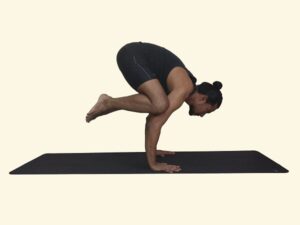 Kakasana- Crow posture
Kakasana- Crow postureKakasana (‘kak’ means crow) is another one of my favorite poses and is similar to bakasana. These two poses are… Read More »Kakasana- Crow posture
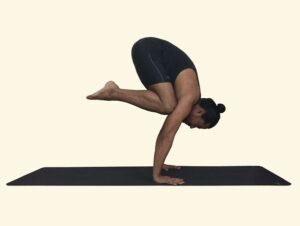 Bakasana- Crane posture
Bakasana- Crane postureBakasana (‘bak’ means crane) or the crane posture is an arm balancing posture. People often confuse this posture and use… Read More »Bakasana- Crane posture
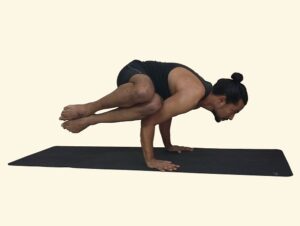 Parsva Bakasana – Side Crane Posture
Parsva Bakasana – Side Crane PosturePrasva – side, Bak – crane, asana – posture. The side crane posture.This is an intermediate-level arm balancing posture that… Read More »Parsva Bakasana – Side Crane Posture
 Eka Pada Bakasana – One Legged Crane Posture
Eka Pada Bakasana – One Legged Crane PostureEka = One, Pad = Foot or Leg , Bak = Crane.This is an advanced pose that can only be… Read More »Eka Pada Bakasana – One Legged Crane Posture
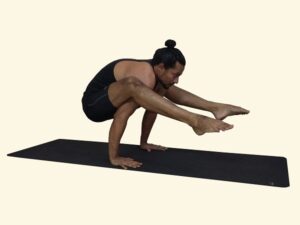 Dwi hasta bhujasana- two hands and arms posture
Dwi hasta bhujasana- two hands and arms postureDwi means two, hasta means hand, bhuja means arms Steps: Stand with your feet hip width apart. Exhale, bend forward… Read More »Dwi hasta bhujasana- two hands and arms posture
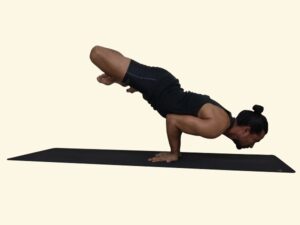 Padma mayurasana- Lotus peacock posture
Padma mayurasana- Lotus peacock posturePadma means lotus and Mayur means Peacock in Sanskrit. This demands good physical strength though it is easier than Mayurasana.… Read More »Padma mayurasana- Lotus peacock posture
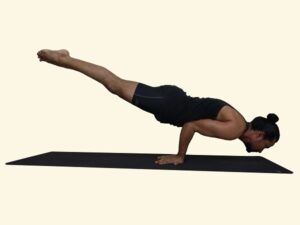 Mayurasana – Peacock Posture
Mayurasana – Peacock PostureMayurasana (Sanskrit: मयूरासन) or Peacock Pose is an asana where the individual assumes a peacock like posture. This posture is… Read More »Mayurasana – Peacock Posture
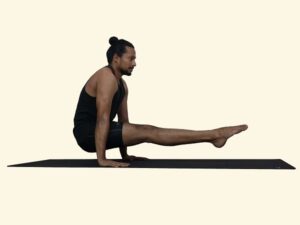 Bramcharyasana- Celibate’s pose – L sit
Bramcharyasana- Celibate’s pose – L sitThis posture is also called the L sit in modern Gymnastics. Steps: Sit in dandasana with legs together and outstretched… Read More »Bramcharyasana- Celibate’s pose – L sit
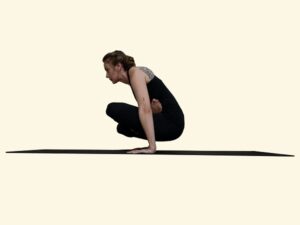 Utpluthih – Uprooting
Utpluthih – UprootingUtpluthih is also known as tolasana – scales pose Steps: 1 Take the legs in to the lotus pose. If… Read More »Utpluthih – Uprooting
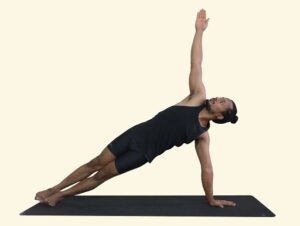 Santolasana- high plank postures
Santolasana- high plank posturesVariation 1: Sit in Vajrasana and come to a table top posture from there (hands and knee on the ground,… Read More »Santolasana- high plank postures